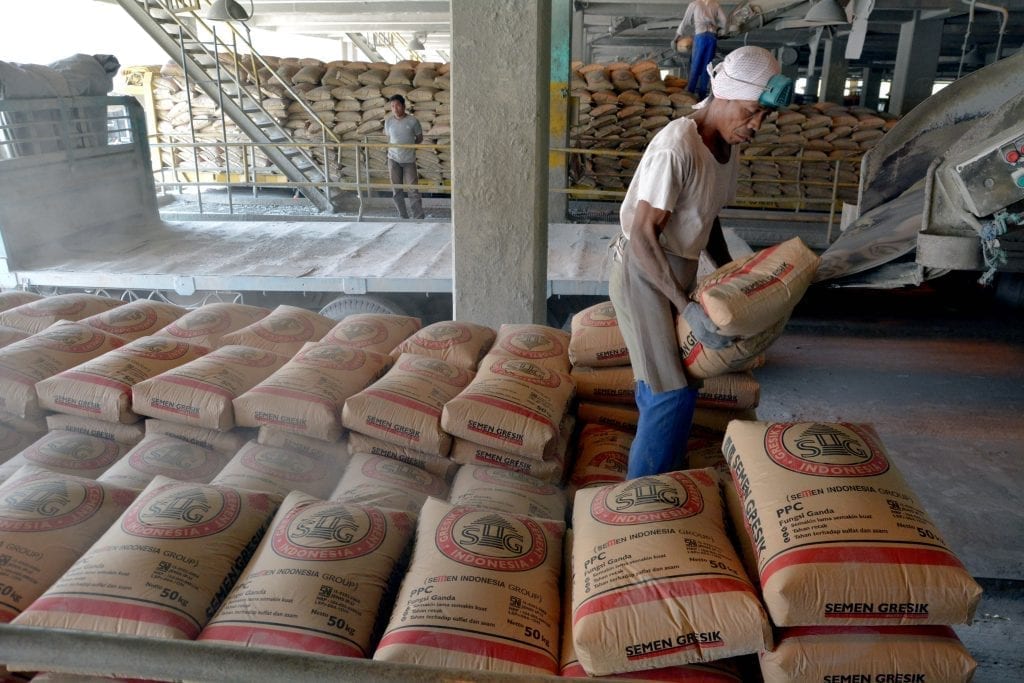
The World Bank has cut its growth forecast for the Indonesian economy for this year to 5.2 percent from the 5.3 percent projected in March, amid volatile global financial conditions that have forced the central bank to tighten monetary policy.
The Central Statistics Agency (BPS) said the Indonesian economy grew 5.06 percent year-on-year in the first quarter, far lower than the 5.4 percent target in the 2018 state budget, mainly due to household consumption, which remained stagnant.
The projection by the Washington-based lender is in line with that by the Asian Development Bank and International Monetary Fund, which predict that the country’s economy will likely expand by 5.2 percent.
“There is elevation of volatility in the global market starting in February, which put a lot of pressure on emerging markets, including Indonesia. So the first quarter was not as strong as we had expected,” Frederico Gil Sander, World Bank lead country economist for Indonesia, said.
The rupiah dropped to a low of 14,202 against the US dollar last month – the weakest level since 2015 – amid a massive selloff on the Indonesian Stock Exchange (IDX) as global investors moved their capital into higher-yielding assets in the United States. The 2018 state budget assumes a rupiah exchange rate of 13.400 to the dollar.
Foreign investors, who largely hold the most liquid assets on the IDX, have sold Rp 38.5 trillion ($2.9 billion) worth of stocks between January and May, which is only Rp 2 trillion short of the total for all of last year.
In its first since November 2014, Bank Indonesia hiked its benchmark interest rate twice in two weeks last month to support the currency and stem capital outflows.
However, there are fears that an early rate hike may lower spending by consumers and businesses as it makes lending more expensive. Growth in private consumption, which accounts for half of Indonesia’s economy, remained stuck at 5 percent in the first quarter.
“We think consumption has stabilized at around 5 percent, and while it is not slow, some efforts are needed by the government to accelerate consumption,” said Sander, who was previously based in India.
However, Indonesia is benefiting from rising commodity prices, including coal, one of the country’s key exports, which rose 25.6 percent on average in the first quarter. Indonesia’s coal benchmark, or HBA, was set at a six-year high of $101.86 in March.
Last month, oil prices also hit their highest levels since November 2014, reaching almost $78 a barrel for global benchmark Brent crude.
The higher commodity prices saw more investment, especially in machinery, equipment and vehicles. According to the Investment Coordinating Board (BKPM), Indonesia attracted Rp 185.3 trillion in investment between January and March, which was 11.8 percent higher than the same period last year. Of this, Rp 108.9 trillion was foreign direct investment, excluding banking and the oil and gas sector.
The BKPM has set a total investment target of Rp 765 trillion for this year, which represents a 10.4 percent increase from last year. Rp 477.4 of this is foreign direct investment.
The rise in investment increased import growth to 19.5 percent in the first quarter, compared with exports, which increased by 10.2 percent.
Total imports reached $44 billion between January and March, with raw materials amounting to $32 billion, followed by capital goods and consumer goods, BPS data shows.
Indonesia recorded a trade deficit for three months in a row between December and February, which swung to a surplus in March before returning to a deficit in April.
Government consumption rose 12.9 percent in the first quarter – the fastest pace since 2016 – due to increased spending on social assistance, such as the Family Hope Program (PKH), which is aimed at reducing poverty and inequality. The cash transfer program is targeting 10 million of the country’s poorest families this year.
According to Sander, the government’s infrastructure push, aimed at closing the gap between urban and rural areas, must continue while it should also work to improve the quality of human capital, including raising skill levels in the labor force to increase productivity.
President Joko “Jokowi” Widodo’s administration has spent around Rp 905 trillion on infrastructure projects across the archipelago between 2015 and 2017, while the government has allocated a fifth of its budget, or Rp 1,167 trillion, to education in the same period.
Finance Minister Sri Mulyani Indrawati last month predicted that the Indonesian economy would grow between 5.17 percent and 5.4 percent this year, while, Bank Indonesia predicted a growth rate of between 5.1 percent and 5.5 percent.

